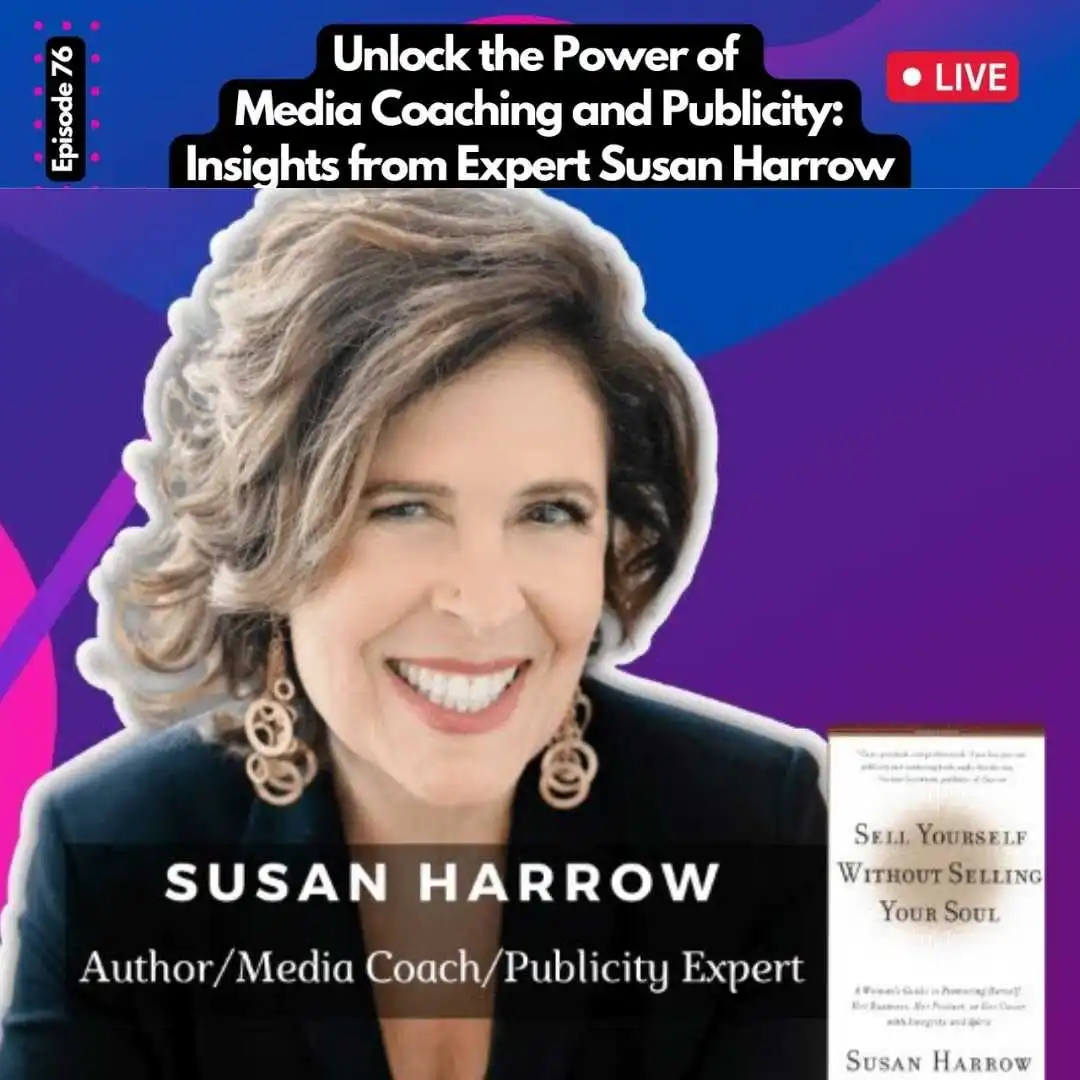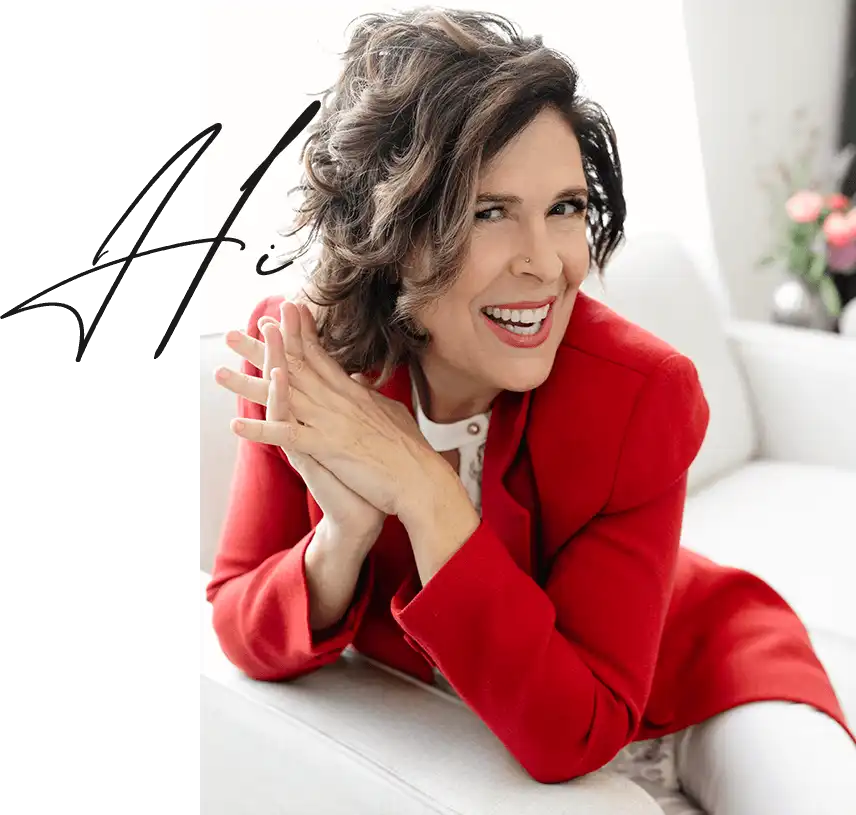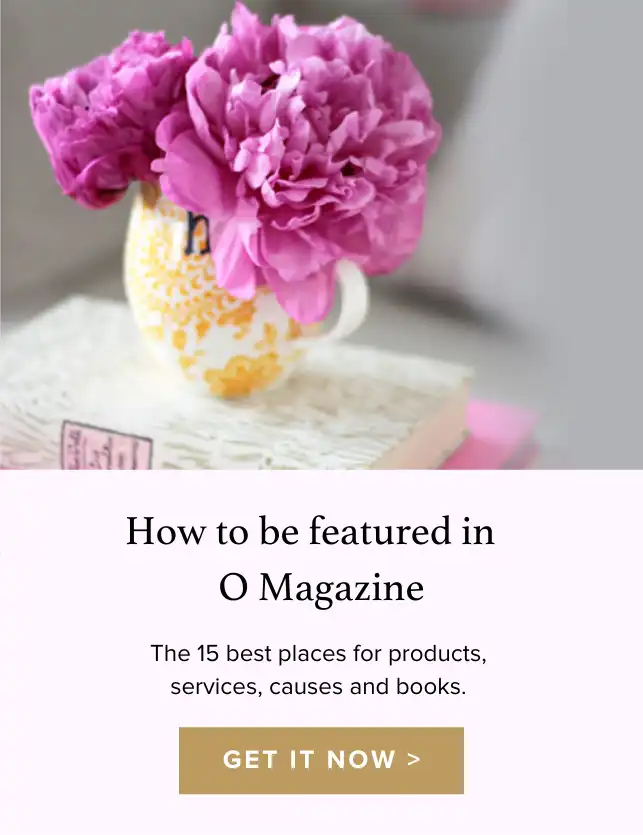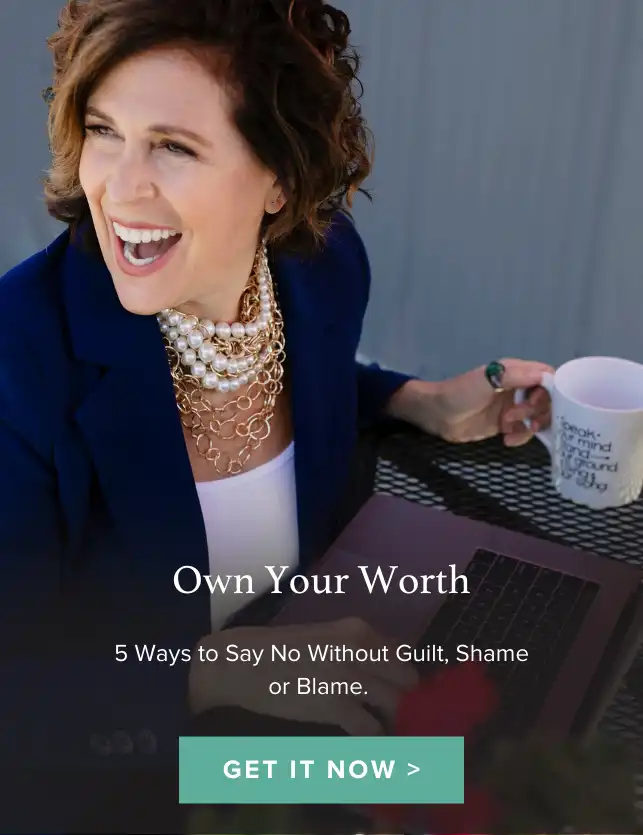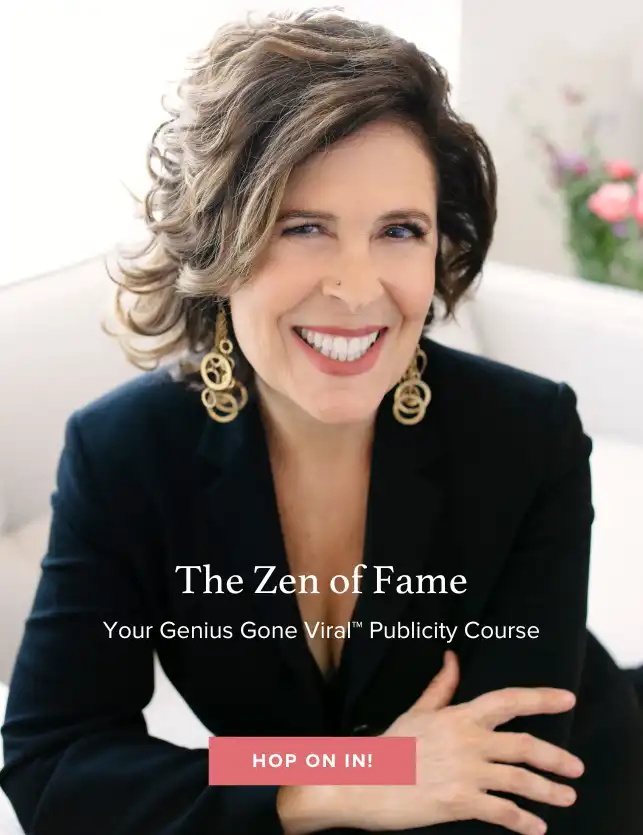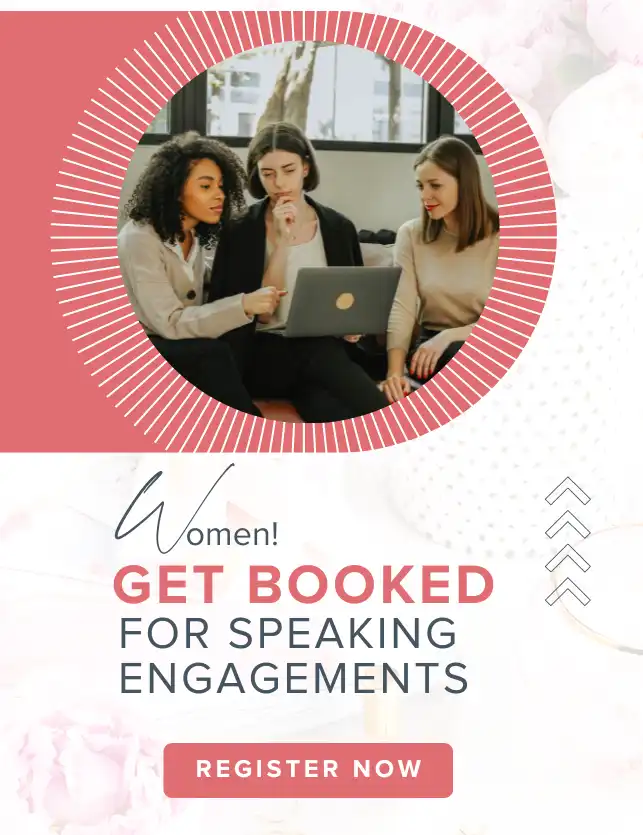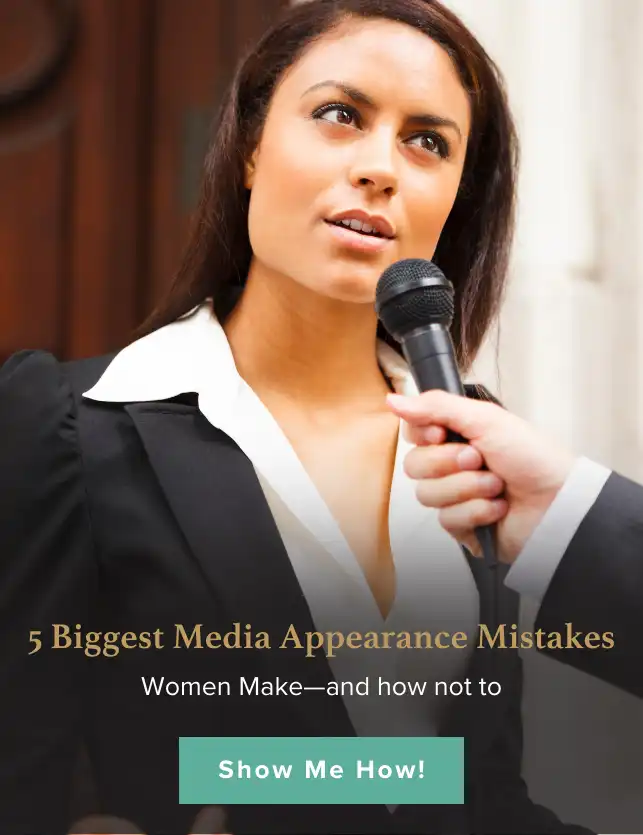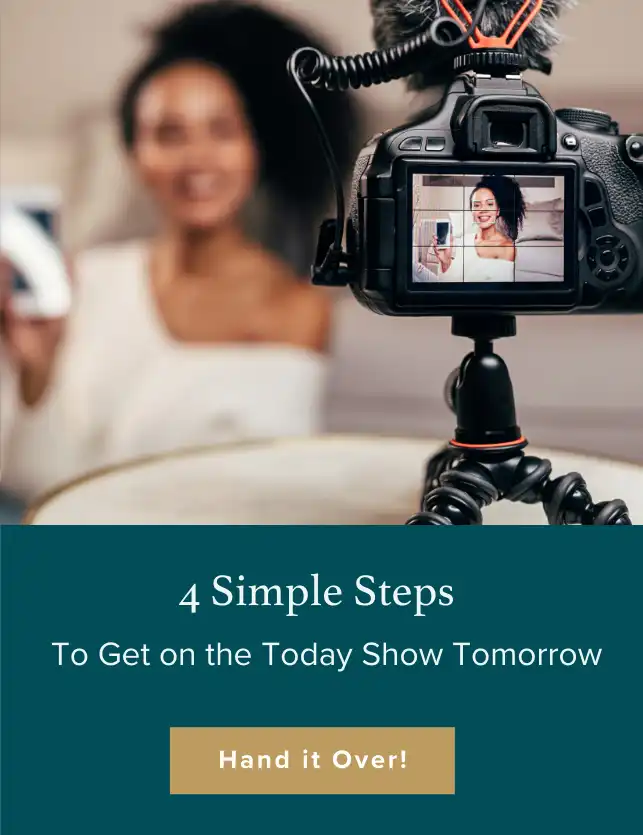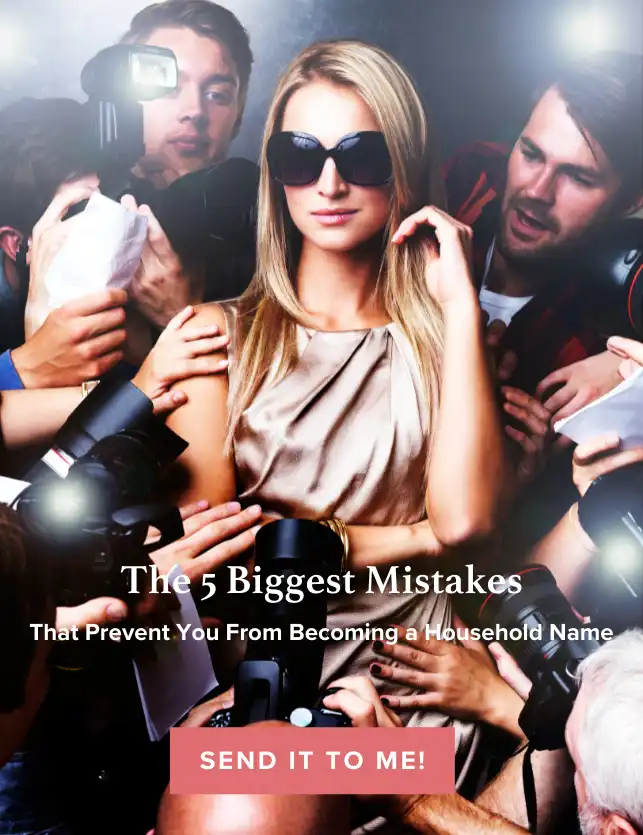Seamlessly Moving From The Stage To The Media – Interview by Tricia Brouk – The Big Talk Podcast
Seamlessly Moving From The Stage To The Media.
Tricia Brouk: Hello friends. Welcome to the Big talk. I’m Tricia Brouk. Welcome to this bonus episode of The Big talk. So many of our listeners know how to tell their story in a 45 or 60-minute keynote or even in an 18-minute talk. But what about a three-minute segment for TV? The power of being able to communicate effectively is something we are going to be talking about today. And I am super excited to welcome our featured guest the amazing Susan Harrow. Susan, are you ready to drop in?
Susan Harrow: I am, I’m so super excited.
Tricia Brouk: Susan Harrow is a top media coach, PR expert and author of the best-selling book Sell Yourself Without Selling Your Soul®. For over 33 years, she’s helped thousands of CEOs, startups, celebrity chefs, rock stars, New York Times bestselling authors, speakers, and entrepreneurs just like you shine as guests on 60 Minutes, Oprah, Good Morning America, the Today show, Fox, CNN, NPR and on radio print and podcasts. What you might not know about her is that she’s a black belt in Aikido, and was almost sold into slavery for three camels and a mule. She’s here today to talk with me about how you can enhance your presence and voice on stage and during media appearances to grow your business. Susan, take a minute to fill us in on anything I missed and talk a little about you.
How To Be Open and Relatable Without Being Manipulative During a Media Interview.
Susan Harrow: Oh, I know, you ask that and that’s always kind of a point of shyness, and where to start. I don’t know if other people have that issue. But I think probably one of the biggest things about me is that I think there’s such a big difference between authenticity and truth-telling. That line is something that I straddle all the time. Thinking about how much to tell, and where vulnerability crosses over into saying too much about personal things.
And that’s part of what I call your presence. What you bring when somebody meets you, their initial impression. Right now we just have the voice and then when people meet you in person, it’s the feeling. And the feeling and what I reinforced for myself every single day is that I want to be a wish-fulfilling jewel. That I would like to be a person who extends joy. And that is a practice, just like every other practice that I do for working with my clients and workshop participants, and myself every single day.
Tricia Brouk: I love that I think that you’re talking about vulnerability in a way that often people miss and that is knowing how to be open and relatable without being manipulative.
Susan Harrow: Yes, you said it exactly right. And to find that place where you connect. So where your vulnerability connects with someone else’s experience. That’s what we’re going for. I think that the tide has turned in another direction where it’s telling people, things that maybe make them uncomfortable, or it’s become a one-upmanship. Can I be deeper, darker, more miserable than you? So it becomes a kind of contest. The other thing about that, and this goes to your media appearances and your speaking is how much do you want to reveal? What is it that you really want to keep private, you would only tell your best friend, and what is open to sharing? Everybody decides that line for themselves.
Tricia Brouk: There’s something also about vulnerability that is directly related to impact. If you are clear in what that boundary is that you just said we need to be conscious of. I would love for you to share with our listeners, this incredible process that you have in working with your clients and your workshop participants about having a true impact whether it’s a TEDx, a media appearance, or a stage appearance.
Why Setting Your Intention is The First Step To Successful Media Appearances.
Susan Harrow: Yeah, so this sets this we’re going to talk about sound bites in a little bit. This really is the best background and foundation before you establish your sound bites. Before you start to create your speech, think about what is your deepest intention, your big vision, and how you want to serve. So that’s number 1. When I say your big vision, and it could be for your family or community, it doesn’t necessarily have to be changing the world. But what is it that you are, that you focus on that you can think about every single day, whether it’s writing a book, this goes for every single thing.
So what I say every day is, one of mine, what I say every single day, is something that I have on my altar is, “Open my path before me and grant me the opportunity to be of maximum good in the world”. This is from Caroline W. Casey.
It’s something that I say before I work with every client, but it’s something that I reinforce every day. My big vision of what I want to do. And then I might be more specific when I want to write a book or a speaking engagement. So that’s number one.
Number two is what you want for yourself. And that’s personally, professionally, spiritually, emotionally, and financially. We really want to look at everything because when you start to do media appearances, and when you’re on a TEDx stage, that can just open up possibilities that you never even imagined. Let’s start to imagine them, who do you want to connect with? What do you want, you have programs and courses and products that you want to sell, but really get quantitative.
Think about that, really, in your spiritual growth and your emotional growth and your financial. How much money do you want to make? In each area. Be really super specific, because that’s going to be part of the foundation of what you’re going to say, whether you’re on a stage, probably not a TEDx talk, but a stage. Whether you’re speaking to sell or on a stage, where you’re at a conference or at a corporation. So what is it that you want for yourself think deeply about that.
Guide Your Audience Into The Action That You Want Them To Take During Any Speaking Engagement.
Number three, is the action that you want your audience to take. What do you want them to do? Sometimes you want to drive them to your website. Do you want to change a perception, it’s not always about commerce. It may be changing a point of view. It may be a deepening practice of some sort. So what is it that you actually want them to do? What physical things are very grounded? Do you want them to take, think about, whatever that is.
The other thing I want to say about that is when you’re speaking on stage, you actually need to let the audience know that you’re available to be hired. So you actually need a story about how someone hired you to speak.
I remember being at Brendon Burchard’s, the very first sponsorship event that he ever gave, and he was up there standing speaking. He said, “You can’t believe this but I speak to corporations all the time, but they don’t know that they can hire me.” And you’re like, what? Because you’re speaking at a corporation. So you think that people know? So he said, “I had to create a story that let them know that they could hire me.”
So it’s a story about how a corporation hired you that fits into one of your core messages. It’s not just dangling out there as a story by itself, but it’s really integrated into your talk. Part of that is that we think that what we’re saying or what we’re asking people to do is obvious, but it’s not.
When I was working with Greg Mortenson who wrote Three Cups of Tea, who has an organization that teaches girls in Afghanistan and Pakistan and creates education for them. So they won’t be ruled by their Mullahs. That was his mission. When he had first come to me, he had already been on Terry Gross’ Fresh Air, but it didn’t have any impact. This was just wow, that’s a really coveted media spot. I said, “Well, did you speak to how people could join your organization, donate money, and help these girls,” and he didn’t.
Media Appearance Can Open Big Doors for New Opportunities.
So the next time, he had a great opportunity at Parade Magazine, he had a program for children in school to give their pennies, and he had opportunities for people to donate their time and donate their money. We incorporated all of that in his media, his quote, unquote, media interview in Parade Magazine, which was a giant spread.
He was overwhelmed with responses and people from Hollywood were banging on his door saying, “I want to fly out, I want to buy your story, I want to make this into a movie.”
We talked about how to hold off people just flying to Montana, at that moment, so he could evaluate the opportunities and get some structure in place with an entertainment attorney and an agent for his book. So that’s the kind of thing that can happen when you have your deepest intention intact. What you want for yourself. And be very clear about what you want your audience to do.
Tricia Brouk: I love this so much. And we talk about being intentional a lot from a big stage. However, this is the first time anyone has illuminated what seems to be so obvious, which is making it clear that you’re available to be hired to speak when you’re speaking. I love that.
Susan Harrow: Right? It’s crazy.
Tricia Brouk: It’s incredible. I would love for you to go a little bit deeper Susan, in terms of that intention and vulnerability when you are doing TV appearances, because when you’re performing from a stage, that energetic connection happens. When you’re performing for a camera, what do you tell your clients in terms of being intentional and vulnerable?
It’s Not About Performance, It’s About Relaxation and Practice During Media Appearances.
Susan Harrow: I know this is just terminology, and you need to use it, but I tell them not to perform. The first thing is I teach them practices to relax. I think that’s the biggest block to being able to be natural and spontaneous.
So the first thing is that we do practice is to relax, which are breath work, physical work, to be able to relax, so you can be yourself. It might sound counterintuitive, but you want to be prepared, so you can be spontaneous. Especially with TV, you mentioned TV, it is such a fast process, you have 10 to 20, 30 seconds max to get your point across. So you want it to be actually very tightly scripted. So the first thing is connecting to yourself, and being able to do a practice.
Use This Practice From the Dalai Lama For Your Next Media Interview or Speech.
One of the practices that I love from the Dalai Lama. I learned this first for the stage. I’ve used it for media. The Dalai Lama, when he is standing before an audience, he imagines himself as a tree. He thinks of his feet as the roots that go into the ground and that connect to every single person in the room.
Then, you expand that out into the local city, the community, the world. So you’re connecting with every single person in that room, but you’re also bringing your attention down to your belly, down to your feet. Because when we get nervous, the attention goes up to our throats and our head and we’re in our head, we’re not an embodied presence.
The other part of it is that when we can relax we can access those spontaneous parts of the brain where the unconscious, the most powerful part of our brain, can pull up the right thing to say. This is what Jazz musicians do all the time. It’s because they’re relaxed enough to do that. When you’re not relaxed cortisol blocks short-term memory. So you may have something memorized but if you don’t have it grooved into the deeper part of the memory, that’s when you can go blank.
Tricia Brouk: It’s great. Everything you’re saying makes perfect sense. It’s so much richer and deeper than just perform when you walk out onto the stage. That’s something that is never reliable. So I know that my audience knows that to be true. Also, back to the original question, which is connecting through the camera?
Susan Harrow: So what you’re doing, you’re not connecting to the camera, you’re connecting to the host. When you do that practice as you’re sitting in the chair before the countdown and when the hot lights are on you, you’re doing the practice where you’re connecting to your audience.
The question to ask yourself is what does my audience need to know now and how can I help?
That’s really all of PR in one sentence.
What does my audience need to know now, now at this moment? And how can I help because you’re speaking to different audiences, so you’re not going just to give the same memorized talk. Then what you’re doing is you’re connecting one on one to the host, you’re making eye contact 100% of the time, yes, that creates the energetic connection.
It’s not easy to do, and it takes practice because we’re not used to that kind of intimacy. So that’s where a lot of practice and roleplay comes in beforehand to be able to do that. If you do need to think you’re not looking away, you’re looking at the host, 100% of the time, you’re creating that connection. Sometimes I even trained how to create that energetic connection. You can start that circle of energy between you and them. That will then translate to your audience. It’s like when you’re speaking when you start to make eye contact and connect deeply with one or two people in the audience, everybody feels it.
Tricia Brouk: I love that you’re giving our audience the precise direction of 100% of the time you need to make eye contact with the host. I’ve seen so many guest spots where the person who’s a guest will look at the host and look at the camera and look at the host and look at the camera.
Be Aware of The Camera and How To Make It Work For You During Your Media Interview.
Susan Harrow: Yes, and you don’t want to do that. Lots of times you do have to be aware of the camera and find out ahead of time, what the camera will be doing. Because there are times like when you’re doing a cooking demonstration, where you do need to be focused straight ahead not on the person that you’re working with. So it’s very specific to what kind of a show it is.
I really recommend that people ask the cameraman, “Where should I look?” They will tell you, “Don’t look at me. Just look at the host, I’ll do the work. Don’t worry about it.” You don’t always know when you’re going into a studio. You don’t always know the underpinnings of how the camera works. So just ask.
Tricia Brouk: I love that. I always ask what the frame is and where they want me to look.
Susan Harrow: What do you mean by the frame?
Tricia Brouk: Is it a wide shot? Is it from my cowboy shot, which is three-quarters? I want to know exactly what part of my body is on camera so I can deal with it.
Susan Harrow: Yes, and I remember one time I was on camera and they had my not-so-good side. People have a good side and a bad side. The live host got to choose where she sat. I sat on the other side and I remember this guy after I came off from doing the interview goes, “You are so much more attractive in life than you were on camera. They should have shot you on the other side.” He actually said that to me. I’m like, thank you. I just said thank you. Yeah, I know which side is my good side.
Tricia Brouk: That’s something also that people may not be aware of, the listeners from the big talk, which is you do look different on camera than you do on stage.
Susan Harrow: Oh, yes. And your movements are completely different. I don’t know if you want to talk about that.
Tricia Brouk: I would love to, I would love to because when I first did on-camera work, I’m from the theatre where everything’s huge. You have to reach the balcony. So the first time I saw myself on film, I was ridiculously overacting. And so yeah, share a little bit of that with us, Susan.
How to Gesture Correctly for TV.
Susan Harrow: Yeah, so what you said is true. You want big gestures on stage, you want to be able to use the whole of your physicality, top, bottom, and side. You want to be so expressive with your voice with your gestures, with your movements and cover.
TV is pretty much the opposite. You are sitting still most of the time. You are not using your hands for expression. And you’re not moving your head. So it’s very strange to be that still.
Now there are times when I do recommend that you use your hands for gestures, for expressions that are short cutting what you want to say. And it’s above the waist. Because the camera when you’re on TV, yes, there are the wide shots, but most of the time they’re shooting you from the waist up. If you’re using your hands at waist level, and then they pop up, you’re only going to see the tips of your fingers and it’s not going to make sense to them. So you want your hands higher, closer to your face when you’re making expressions.
And that’s okay because I do know that you know that for TED Talks, the people who make more expressions have higher-rated Ted talks. The people who have the highest rated TED Talks use the most gesture. But it’s a natural gesture, I do want to say, it’s not putting your hands in a steeple. You may have your own signature gestures that you want to expand the capacity to go beyond what you do naturally. And I’m sure you teach that, like how to use your body, and your arms and your gestures to reach and express what it is that you’re conveying to the audience.
Using Sound Bites To Get Media Attention.
Tricia Brouk: Amazing. So, so good. Can you share with our listeners what a sound bite is and how we can use them to get media attention?
Susan Harrow: Yeah, and I think they have a bad rap. Especially now in this political climate where just no matter what the question is, say what you want to say. But I really think of sound bites as the key messages that you want to give. They consist of stories, statistics, facts, anecdotes, analogies, acronyms, and vignettes. The point of them is to stay on point with what you want your audience to know. It is no matter what someone asks you, you are going to move into a story or a point that you want, but it’s got to sound natural and not salesy. So there are ways and transitions to move into those stories.
But if you’re captivating enough, because really, what any one audience wants, is to be related to knowing what’s important to them. And going back to, what does my audience need to know now? And how can I help? So you’re structuring your stories to that. Now everybody should have a Signature Story. The first question you’re going to get is, why do you do what you do? Why did you write your book? Why did you start your business? That’s a Signature Story. What is it that motivates you that you’ll need to have?
What may be different than your signature story that you’re going to use for a TEDx talk around the stage, right? So you want to have a number of those Signature Stories? The difference between the stage and media is that your story doesn’t need to be in those 30 seconds. Even if you’re doing a radio interview, or a podcast, just because there’s a longer interview process doesn’t mean that you can ramble. Your stories still need to be tight,
Zenify Your Sound Bites and Signature Stories When Being a TV Guest.
I was working with a speaker who was very well known. He was used to giving those 45-minute stories on stage. We were taking one of those stories and moving it down to 30 seconds. Crazily, his very first media appearance was Larry King Live and his second one was Oprah and he had no TV experience. It was very challenging to take those signature stories and move them down from 45 minutes to really 30 seconds.
So when you’re thinking about your signature story, you want to think about, is this appropriate for the medium. Because for TV, radio, and print, your stories are those 10 seconds to 45 seconds max. On a show like Terry Gross, she may give you the latitude of a minute. That’s NPR where you have a little more latitude, but you still want a very tight structure. And so you have your signature story. Why do you do what you do?
Kai Ryssdal on Marketplace, sometimes jams people up, which I love. He asks them, “Tell me what your business is in five words.” People get like six words, but he’s like it’s five words. And he’ll call them out. That was six but it’s okay. You did a good job anyway. So you want to know the medium also because if you are on the Marketplace with Kai Ryssdal, you want to have your five words. I’ve been trying to figure out what my five words are. I’ve got my six and that is not quite to five. But you want to know that and then you want to use these kinds of stories, statistics facts, anecdotes, analogies, acronyms, and vignettes within your structure of how you speak, it’s a natural conversation that goes back and forth.
There are key points that you want to make that relate to your offer, what you’re promoting, and what is it that you want to grow your business. And that relates back to, your big vision. How do you want to serve? Those are the stories that are foundational, what you want for yourself personally, and professionally, then the action that you want your audience to take.
Some of those stories for TV, or at least one of them, is going to be about how an organization or someone hired you as a speaker. That is part of the story that you would tell. It can be something as simple as, “When I was speaking at X, the question that I got asked most was this. And that seems to be….,” and then you move into your story. So it can be something as simple and as subtle as that.
Tricia Brouk: That’s so amazing. You reminded me of a story a friend told me, the writer of BlacKkKlansman pitched the idea to Spike Lee in five words.
Susan Harrow: Wow. Do you remember what it was?
Tricia Brouk: Black man infiltrates the KKK.
Susan Harrow: That’s fantastic.
Tricia Brouk: Spike Lee said, “We’re working together.” And of course, we all know the rest is history with that Academy Award situation.
Susan Harrow: Wow, that is so great. So powerful.
Tricia Brouk: Yeah. And I think what you’re you’re sharing with us that’s so important to remember is that: I do believe sound bites are getting a bad rap. And when you understand how to distill your story or your message down, and this is a perfect example, of Spike Lee, you can accomplish everything you need to in a snap.
Susan Harrow: That is what is so amazing, I think about it as, taking War and Peace and turning it into Haiku. Which is not an easy task, right?
Tricia Brouk: That’s incredible. I love that. You are so amazing at your work. And it’s so fascinating to be able to distill this and to move so fluidly between the stage and media. I’d love for you to talk more about the paradox of becoming a speaker and then the using of our voice in a way that reaches people, whether it’s from a stage or from a screen.
Susan Harrow: Yeah, and the other thing I just want to say about sound bites because I think that there’s resistance to them, that people say, “It’s too simple.” One of my clients wants to speak at Dave Asprey’s Biohackers Conference. Something that she hasn’t talked about before, and I was writing up the pitch for it and tried to describe some pretty complicated medical technologies.
I took what she wrote and moved it down into one sentence from her paragraph. She said “You know what, I think that one of these is simplified too much.” She said, “I need to run it by my partner.” I’m like, Okay, fine. But I knew that it was simplified down to what it needed to be just for someone to understand it.
It’s about the Zenification of it. It’s not about the stupefaction. That’s a really big difference. That’s what we’re going for, we’re going for the Zen of hype, so to speak, really to be like a Zen master of how can I make this so clear that everybody can understand it.
Tricia Brouk: And the other part of that formula is that we are so close to our story, whether you’re a writer, whether you’re a speaker, if you’re writing a book, or a screenplay or a big talk. Everything about it is precious. And we have to trust somebody like you in order to distill it down in a way that is specific, and intentional, and in five words.
Susan Harrow: And then we have to test it on our audience because we are the worst judge. Like when we think it is precious, or we think that this is going to be funny, or we think this is going to be our best story then the audience doesn’t respond to it. That’s what Jerry Seinfeld was so brilliant at. How many times he did his work on stage to find out where the audience responded and what needs to be tweaked to the second to be able to get that response. And that’s when we’re really starting to move into mastery. Right? Where we are working on the second timing of a story. That’s, that’s further down the road for most of us. But, I love that idea, that’s so important that one second.
Tricia Brouk: It is, it’s so important. And I have the privilege of living in New York City where Jerry Seinfeld pops into comedy class. So it’s sort of like winning the lottery if you’re at a show, and he just decides to try out material and it has happened to my friends.
Susan Harrow: Oh, I hope it happens to you one day, too.
Tricia Brouk: I think it might.
The Media/Fame Paradox.
Susan Harrow: So I’ll go back to the paradox. So the paradox is really this. I remember a story about the Dalai Lama, and him being in an elevator in a hotel with the help, who couldn’t even speak English, and them really being so feeling so good, because of his presence. I’ve been to hear the Dalai Lama too. My brother heard him in Hawaii and was in row five. And I’m like, did you find that, sometimes you couldn’t even understand what he said, even with the translations. He said, “Yes, but that’s not the point. The point was to get as close as possible, so you could absorb his energy.” I think the thing that we forget, too, is how important our presence is.
The Dalai Lama sees people for who they are. The paradox is that we want to be seen but don’t want to be seen.
We want to be seen and we want to be loved for who we are. But on the other hand, we have shame about something, or there’s something that we’re hiding that we hope that people don’t see. And we don’t want to show it. So there’s this pull when you transition from private to a public persona, there’s the pull of wanting to be self-revelatory, but wanting to be loved for it not to be rejected.
I think that this is like the kind of balance that we’re struggling with, I want to be famous, I want to stay at my home. I want to put myself out there. But oh, my God, people are going to write stuff on the Internet. Brené Brown, talked about after her first TEDx Talk where she said: “People wrote the most harmful, mean things on the internet,” that she had to spend the whole day eating chocolate and watching movies.
Tricia Brouk: Yeah. She talks about that in her Netflix series about how painful that was.
Susan Harrow: Yes. Are we prepared for the pain? Because we want the glory but are we prepared for the pain?
Tricia Brouk: Absolutely. And people will come at you.
Susan Harrow: They will no matter what. Especially in this environment where people feel free to criticize you, especially when they’re anonymous. That’s a given. So just know that it’s going to happen.
Tricia Brouk: Yeah, I would love to hear how you share with your clients and also how you deal with it in terms of not letting it infiltrate your heart.
Compose Yourself – Here Come the Critics—When You’re Seen on TV, Video or Social Media.
Susan Harrow: Yeah, so people have different strategies. Like Brené has decided not to read the posts or a lot of people decide not to read the book reviews or whatever. Again, that’s up to you. I really like to ask myself three questions.
- Is this person a nutcase because you can just dismiss it. You can say, “Not relevant to me.”
- Has it triggered something in me? Is there a place where I still need to work on myself?
Because when you are on the stage, your body shows everything. I do Aikido Japanese martial arts. All the bliss and the horror of it, is that everything shows. Where you’re courageous, where you’re cringing, where you’re holding yourself, it all shows on your body. And it’s embarrassing. It’s shameful. It’s like, oh my God, I just blinked again when somebody was, coming for a punch at my face. And courage. Can you not blink? Can you hold still? Can you? That’s a practice.
So it’s also a practice to say, where am I triggered? Did this touch something in me that is yet unhealed or that I need to look at in myself and work on in whatever capacity that is your methodology.
3. Does this have relevance to me? Is there something in this that has part of a truth? If it is, that’s also an opportunity for self-examination.
There’s this Aikido teacher, when I would go there, he would criticize me in front of the class, which really isn’t done. We never talk specifically to a person, we, the person who is leading the training shows the technique and shows where most people are having difficulty.
He would say things like, “Your feet are always catawampus.” Or, “God, you’re never going to learn this…..you’re just like this…..almost hopeless for you.” The one time when he said, “You never improve!” And I said, “Actually, that’s not true. I said, my feet might be catawampus. But I do improve.”
So I did address that. But for the most part, I didn’t. It was bad enough that other black belts, who were very senior in the class said, “What should we do about this?” And I said, “Nothing absolutely nothing, do not go to the Sensei about this, because he would be kicked out at the dojo.” And I didn’t want that. I wanted to look also at the consequences of what happens. What do you want to do to handle it?
What are the consequences that could happen in terms of the quote-unquote, punishment, or revelation or whatever that is. But the other part of it is, my sweetie would say, “Why do you keep going to his class?” And I said, “I’m going to be going to his class, until I am not rubbed the wrong way, at all, to polish my spirit.” Which is a basic tenet of Aikido. To polish your spirit to turn your lead into gold.
And I said, “I’ll still go, because as long as he’s triggering me, as long as there’s a place in me where I do feel shame, or I do feel like an awkward person, which I am on the aikido mat, then I haven’t polished that part of myself.”
Tricia Brouk: You are so amazing, always, always keeping the story moving forward. And I think that’s how you have the kind of impact and share it with a vulnerability that makes the difference in the world Susan.
Susan Harrow: Thank you.
Tricia Brouk: Thank you. I want to thank you for being a featured guest today on The Big talk, where can our listeners get in touch with you, Susan?
Susan Harrow: They can go to prsecrets.com. And they can start there with anything as simple as the 100-Word Email That Can Get The Media To Call You there are lots of free things on there that I recommend that people start with. There are lots of opportunities, there’s even a free page, there’s a page if you want to get to O magazine. There are opportunities to enter wherever you know your interests are at prsecrets.com.
Tricia Brouk: Put all of this in the show notes. Thanks again for listening.
Check out our PR and Media Training Workshop to Jumpstart your Publicity
Tricia Brouk
I am an international award winning director. I have received the Empowered Woman of 2021 award from the International Association of Top Professionals. I have worked in theater, film and television for over three decades. In addition to my work in the entertainment industry, I apply my unique expertise to the art of public speaking. I’m the Executive Producer of Speakers Who Dare, and the former Executive Producer of TEDxLincolnSquare in New York City. I curate the Speaker Salon in NYC, an incubator and showcase for emerging speakers, giving speakers the opportunity to get in front of influencers, event organizers, television producers, and TEDx organizers, who can put them onto big stages. I’m currently working on anything and everything I can to make the world a better place.
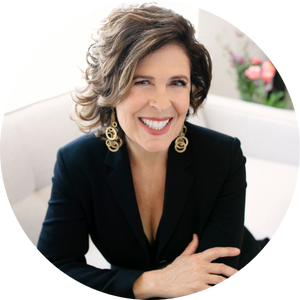
Like what you read? Share it!
Disclosure: Some of the above may be affiliate links that I will be compensated for at no cost to you. They are products or services I’ve either used, vetted or trust. Enjoy!
WE THOUGHT YOU’D ALSO LIKE THESE POSTS

